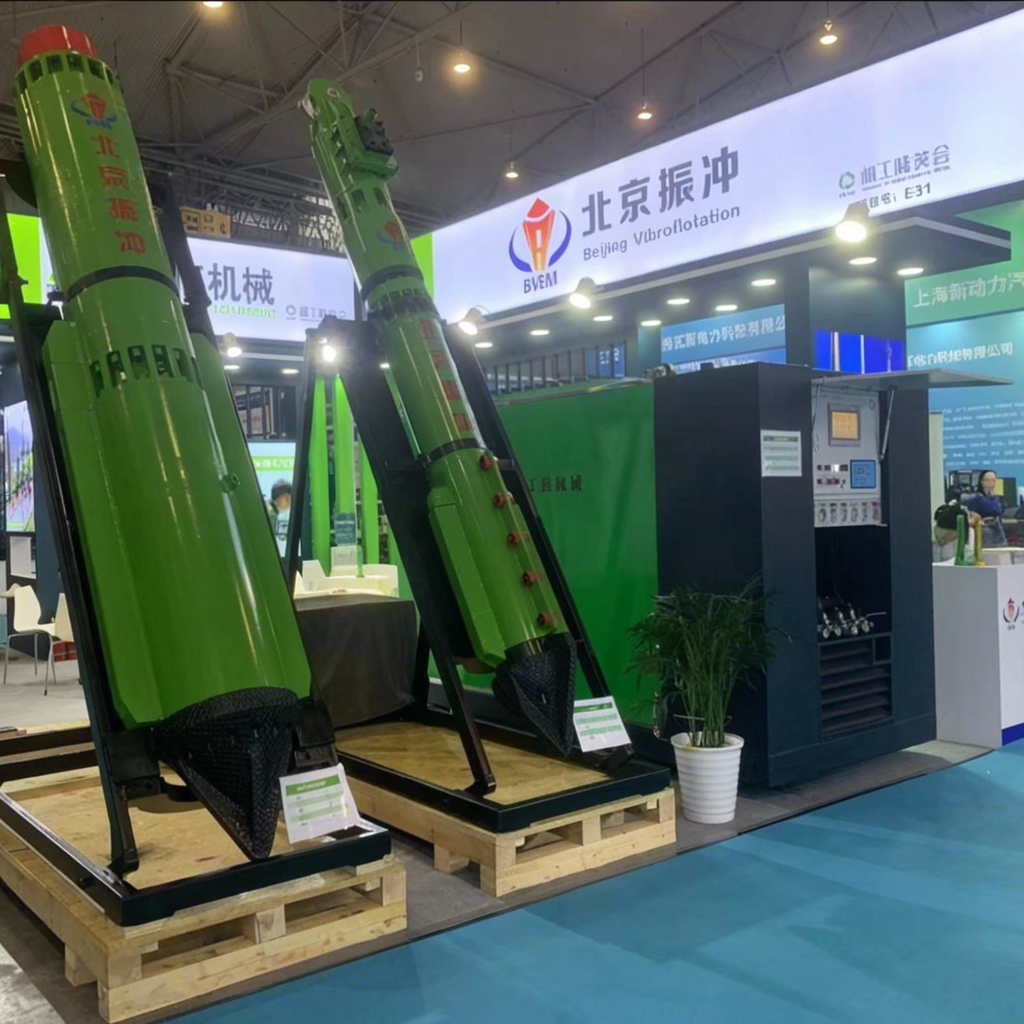close
Choose Your Site
Global
Social Media
Views: 0 Author: Site Editor Publish Time: 2025-01-24 Origin: Site








Hydraulic Vibroflots are versatile construction tools used for soil compaction, ground improvement, and deep foundation work. These machines, equipped with a vibrating head, use hydraulic power to drive the head into the ground, compacting the soil and improving its load-bearing capacity. Commonly used in geotechnical engineering, they are particularly effective in enhancing the stability of loose or saturated soils, making them ideal for preparing sites for construction projects like buildings, bridges, and roads. Their ability to increase the density of soil layers without the need for heavy machinery or extensive excavation makes them a preferred choice for many civil engineering applications.

A hydraulic vibroflot is a specialized construction tool designed for soil compaction and ground improvement. It operates by using a vibrating head, which is inserted into the ground, to compact the soil by rapidly oscillating at high frequency. This process rearranges soil particles, reducing voids and increasing soil density. The hydraulic system powers the vibration mechanism, providing the necessary force to penetrate various soil types, including challenging conditions like saturated or loose soils.
The operation of a hydraulic vibroflot involves several key components working in unison. The hydraulic system generates power, which is transmitted to the vibration mechanism. This mechanism typically consists of an eccentric weight mounted on a rotating shaft. As the weight spins, it creates a centrifugal force, causing the probe to vibrate. The frequency and amplitude of the vibrations can be adjusted to suit different soil conditions. The vibrating head is driven into the ground using the downward force generated by the vibrations, coupled with the weight of the machine. This process is known as “vibro-replacement” or “vibro-compaction,” depending on the method used.
Hydraulic vibroflots are used in various construction and civil engineering projects. Their primary application is in soil compaction, where they help to increase the load-bearing capacity of the ground. This is particularly important in areas with loose or unstable soils, where traditional compaction methods may not be effective. Vibroflots are also used in ground improvement projects, such as the installation of stone columns or vibro piles. These techniques involve inserting a vibrating head into the ground and then injecting coarse aggregate material, which is compacted in place to create a column of improved soil. This method is effective in stabilizing soft or saturated soils and is often used in the construction of embankments, foundations, and other structures.
The use of hydraulic vibroflots offers several advantages in construction projects. Firstly, they provide a cost-effective solution for soil compaction and ground improvement, reducing the need for expensive and time-consuming excavation and backfilling. Secondly, hydraulic vibroflots are highly efficient, capable of compacting large volumes of soil in a short period. This speed of operation is particularly beneficial in projects with tight deadlines. Thirdly, vibroflots are versatile and can be used in a wide range of soil conditions, from granular to cohesive soils. Their ability to compact soil without the need for additional materials or heavy machinery makes them an environmentally friendly option for construction projects.
In conclusion, hydraulic vibroflots are essential tools in modern construction and civil engineering. Their ability to compact and improve soil conditions makes them invaluable in a wide range of projects, from building foundations to road construction. By understanding the different types of hydraulic vibroflots, their applications, and the factors to consider when choosing one, construction professionals can select the right equipment for their specific needs. Proper maintenance and safety practices are also critical to ensure the efficient and safe operation of hydraulic vibroflots. As technology advances, we can expect further innovations in hydraulic vibroflot design and functionality, making them even more effective in enhancing soil compaction and ground improvement.